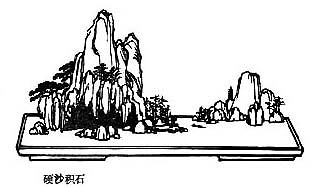孫
子
兵
法
Sun Zi 
 – L'Art de la guerre
– L'Art de la guerre
La stratégie chinoise ou comment s'informer, estimer, diviser, détourner, tromper, et vaincre « sans coup férir ». Tr. Amiot (fr) et Giles (en).
Du plein et du vide
Sunzi VI. 10.
Ce n'est pas tout. Comme il est essentiel que vous connaissiez à fond le lieu où vous devez combattre, il n'est pas moins important que vous soyez instruit du jour, de l'heure, du moment même du combat ; c'est une affaire de calcul sur laquelle il ne faut pas vous négliger. Si l'ennemi est loin de vous, sachez, jour par jour, le chemin qu'il fait, suivez-le pas à pas, quoique en apparence vous restiez immobile dans votre camp ; voyez tout ce qu'il fait, quoique vos yeux ne puissent pas aller jusqu'à lui ; écoutez tous les discours, quoique vous soyez hors de portée de l'entendre ; soyez témoin de toute sa conduite, entrez même dans le fond de son cœur pour y lire ses craintes ou ses espérances. Pleinement instruit de tous ses desseins, de toutes ses marches, de toutes ses actions, vous le ferez venir chaque jour précisément où vous voulez qu'il arrive. En ce cas, vous l'obligerez à camper de manière que le front de son armée ne puisse pas recevoir du secours de ceux qui sont à la queue, que l'aile droite ne puisse pas aider l'aile gauche, et vous le combattrez ainsi dans le lieu et au temps qui vous conviendront le plus. Avant le jour déterminé pour le combat, ne soyez ni trop loin ni trop près de l'ennemi. L'espace de quelques lieues seulement est le terme qui doit vous en approcher le plus, et dix lieues entières sont le plus grand espace que vous deviez laisser entre votre armée et la sienne.
Amiot
Knowing the place and the time of the coming battle, we may concentrate from the greatest distances in order to fight.1
But if neither time nor place be known, then the left wing will be impotent to succor the right, the right equally impotent to succor the left, the van unable to relieve the rear, or the rear to support the van. How much more so if the furthest portions of the army are anything under a hundred li apart, and even the nearest are separated by several li!2
Giles VI.19,20.

L'Art de la guerre – Sun Zi VI. 10. – Chinois on/off – Français/English
Alias Sun Tzu, Sun Wu, Sun Tse, Sunzi Bingfa, Souen Tseu, Souen Wou, 孫武.
Le Canon des Poèmes, Les Entretiens, La Grande Étude, Le Juste Milieu, Les Trois Caractères, Le Livre des Mutations, De la Voie et la Vertu, 300 poèmes Tang, L'Art de la guerre, Trente-six stratagèmes
Bienvenue, aide, notes, introduction, table.
Index – Contact – Haut de page
